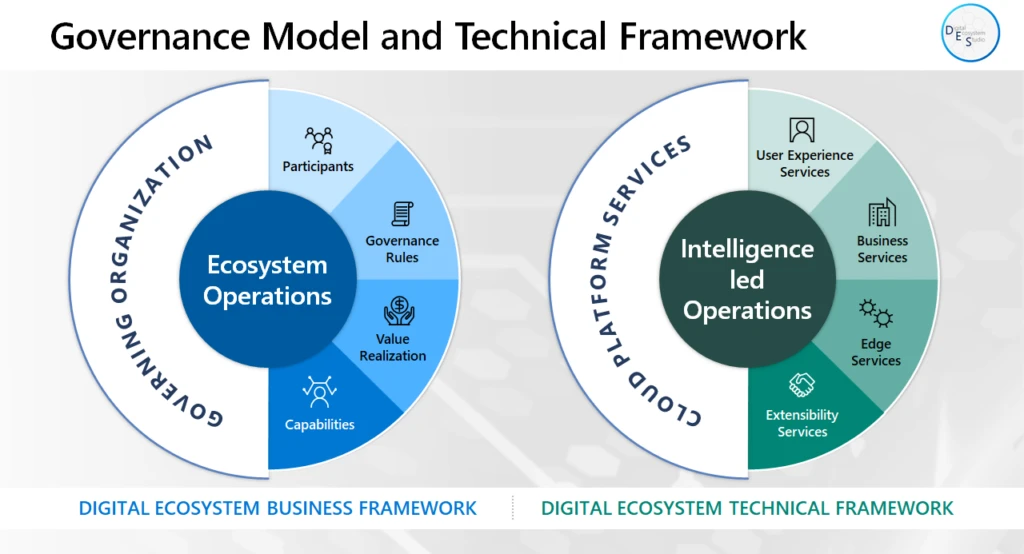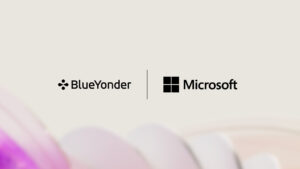
Effective ecosystems require creative collaboration around data

Today, we have a perfect storm of technology, demographic shifts, and macro-economic shock and transition where:
- Compute power is being made available to everyone.
- Digital natives have a prominent voice in the marketplace.
- Governments have a key role in governing data sovereignty and rights.
This environment is driving a new way of thinking—therefore bringing new opportunities. We are seeing a much more inclusive approach to solving problems and adding value. One such example is represented by Digital Ecosystems.
To learn more about the digital ecosystem, watch a visionary panel of experts as they discuss the Public Finance ecosystem cooperation powered by technology.
Digital Ecosystems are comprised of companies, people, data, processes, and things that are connected by the shared use of digital platforms. These partnering ecosystems are created to enable collaboration and provide mutually beneficial results to all parties involved:
- 70 percent of new value created over the next decade will be based on digitally enabled platform business models.¹
- 75 percent of business leaders will leverage digital platforms and ecosystem capabilities to adapt their value chains to new markets, industries, and ecosystems by 2025.²
- 60 trillion U.S. by 2025—Digital Ecosystems global revenue projection.³
Now imagine what a Digital Government Ecosystem could look like. The Future of Government 2030+ report published by the Joint Research Centre (JRC), the European Commission’s science, and knowledge service gives a good indication with the vision of a Super Collaborative Government⁴. An example of how technology can help is referenced in the report. CitizenLab, a start-up from Brussels that developed the platform that helps agencies to engage with their public. According to CitizenLab, the use of online platforms enables the engagement of more citizens, reaches out better to citizens under 35, and speeds up the process of the engagement phase. Over 75 governments have used this platform so far.
Bringing it to the public finance world, the collaborative government would be able to answer questions such as: What if the tax system enabled members of the public to decide directly where their money is being invested? or What if cooperative compliance would be the norm?
Technology is an important part of the answer, a strong governance model is another important part.
Public Finance ecosystems are driven by how well data is leveraged

Focusing on the technical framework, Cloud Platforms provide the fabric for a wide range of technical capabilities to extend or build new ecosystems.
User experiences is key as it is the user, be it an individual, a government, or a business, that is the beneficiary. The ease of use will dictate adoption and should guide the design, ability to enable compelling experiences with marketplaces, omnichannel engagement, mobility, analytics, device support, mixed reality, and more.
Next, business services infrastructure needs to support new digital capabilities and connect to existing legacy ones (such as traditional ERP systems). This also enables the emerging trend of white labelling of services. Personalization is key for a collaborative government, and this requires intelligent services. This fuels data-driven decision-making and actions through AI and machine learning algorithms, automation, data management, Blockchain, and predictive analytics to address both the current and future.
Digital inclusion is the necessary condition for any such ecosystem, and this could be provided on one hand by edge services that enable the connection into the physical: (1) Environment, (2) Events, and (3) Assets to enable the collection of rich data for increased intelligence and action. And on the other hand, by extensibility services based on flexible, pluggable, and scalable connectivity supporting integration with existing solutions, ecosystems, and data brokers through service-oriented architecture designs, open API’s, and adaptor frameworks.
Returning to the inclusive tax compliance example, such government ecosystem could be enabled through data collaboratives that enable seamless cooperation and personalization and the ability to understand in real-time the socio-economic reality and predict impact of different factors, including policy changes. And these are exactly the areas where Microsoft is a leader:
- Microsoft named a Leader in 2021 Gartner® Magic Quadrant™ for data integration tools | Azure Blog and Updates | Microsoft Azure.
- Microsoft named as a Leader in 2021 Gartner® Magic Quadrant™ for Full Lifecycle API Management | Azure Blog and Updates | Microsoft Azure.
- Microsoft named a Leader in 2021 Gartner Magic Quadrant for Cloud AI Developer Services – Microsoft Tech Community.
- Gartner reaffirms Microsoft as a leader in Data Management Solutions for Analytics | Azure Blog and Updates | Microsoft Azure.
- Gartner names Microsoft a leader in the Magic Quadrant for Data Management Solutions for Analytics (DMSA).
Learn more
Watch the Microsoft Government Digital Forum, and listen to a visionary panel of experts as they deep dive into the Public Finance ecosystem cooperation powered by technology.
To learn more about Microsoft’s expertise in Public Finance we invite you to watch this video.
¹Strategic Intelligence (weforum.org)
²IDC | Building Resiliency to Thrive in the Next Normal – Presentation
³How companies can create value from digital ecosystems | McKinsey
⁴https://publications.jrc.ec.europa.eu/repository/bitstream/JRC115008/futurgov_web_lq_v2.pdf




